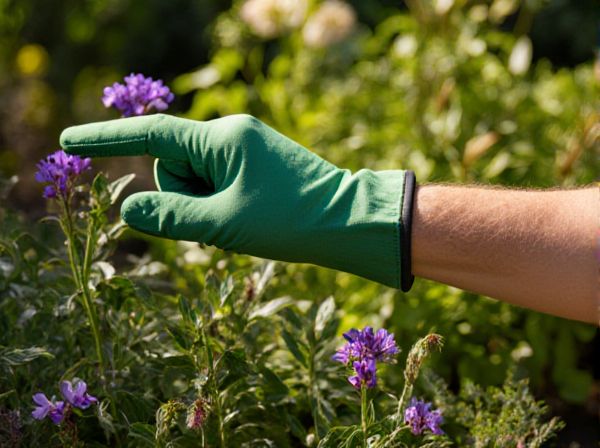
Shade Plants vs Sun Plants Illustration
Shade plants thrive in low-light conditions, requiring minimal direct sunlight to grow, making them ideal for shaded gardens or indoor spaces. Sun plants demand full sun exposure to perform photosynthesis efficiently, producing vibrant blooms and strong foliage. Understanding the specific light needs of shade plants versus sun plants ensures optimal growth and garden vitality.
Table of Comparison
| Feature | Shade Plants | Sun Plants |
|---|---|---|
| Light Requirement | Indirect or low light | Direct sunlight, 6+ hours daily |
| Examples | Ferns, Hostas, Impatiens | Sunflowers, Lavender, Tomatoes |
| Water Needs | Moderate, consistent moisture | Higher, may need frequent watering |
| Growth Rate | Slower to moderate | Faster, thrives under full sun |
| Soil Preference | Rich, moist, well-drained soil | Well-drained, often drier soil |
| Typical Uses | Ground covers, understory plants | Flower beds, vegetable gardens |
Understanding Shade and Sun Plants
Shade plants thrive in low-light environments by adapting to reduced sunlight through larger leaves and slower growth rates, optimizing photosynthesis under limited light. Sun plants require full sunlight to maximize energy production, exhibiting smaller, thicker leaves to reduce water loss while enhancing photosynthetic efficiency. Understanding these adaptations helps gardeners select suitable plants based on light exposure, ensuring healthier growth and sustainable garden design.
Key Differences Between Shade and Sun Plants
Shade plants thrive in low-light environments with indirect sunlight, featuring adaptations like larger leaves to capture limited light efficiently, while sun plants require full direct sunlight for optimal growth, often having smaller, thicker leaves to prevent water loss. Shade plants typically exhibit slower growth rates and tend to have a higher chlorophyll content to maximize photosynthesis under shaded conditions. In contrast, sun plants grow faster, produce more flowers or fruits, and are adapted to withstand higher temperatures and stronger light intensity.
Benefits of Growing Shade Plants
Shade plants thrive in low-light conditions, reducing water evaporation and conserving soil moisture, which lowers irrigation needs. They improve garden biodiversity by providing habitats for shade-loving insects and wildlife, enhancing ecosystem balance. Shade plants also protect soil from temperature extremes and erosion, promoting healthier and more sustainable garden environments.
Advantages of Sun-Loving Plants
Sun-loving plants thrive in direct sunlight, promoting vigorous growth and vibrant blooms due to increased photosynthesis. These plants, such as tomatoes, sunflowers, and lavender, generally require less watering than shade plants, reducing maintenance efforts. Their ability to produce higher yields and stress tolerance makes them ideal for sunny gardens and landscapes.
Popular Shade-Tolerant Plant Varieties
Hostas, ferns, and caladiums are among the most popular shade-tolerant plant varieties, thriving in low-light environments with minimal sun exposure. These plants feature broad, lush foliage designed to capture limited sunlight efficiently, making them ideal for shaded garden areas or beneath tree canopies. Their ability to adapt to cooler, moist soil conditions further enhances their desirability for shaded landscaping projects.
Top Sun-Loving Plants for Your Garden
Top sun-loving plants for your garden include vibrant species such as lavender, marigolds, and sunflowers, which thrive in full sunlight and enhance outdoor spaces with bright colors. These plants require at least six hours of direct sun daily to maintain healthy growth and maximize flowering. Choosing drought-tolerant varieties like succulents and ornamental grasses ensures durability and low maintenance in sunny garden areas.
Light Requirements: Assessing Your Garden Space
Shade plants thrive in low-light conditions, often requiring only 10-30% of full sunlight, making them ideal for areas with dense tree canopies or north-facing slopes. Sun plants need at least 6 hours of direct sunlight daily to perform photosynthesis efficiently, supporting robust growth and flowering, which suits open garden spaces or south-facing plots. Assess your garden's light levels using a sunlight meter or tracking sun exposure over several days to match plant choices with their specific light requirements optimally.
Common Challenges with Shade and Sun Plants
Shade plants often struggle with insufficient light, leading to slower growth and weaker foliage, while sun plants face challenges such as leaf scorch and dehydration due to excessive sunlight. Both types require specific watering schedules; shade plants need consistently moist soil to avoid drought stress, whereas sun plants demand well-drained soil to prevent root rot from overwatering. Pest and disease susceptibility varies, with shade plants prone to fungal infections in damp conditions and sun plants more vulnerable to insect infestations under high heat exposure.
Tips for Mixing Shade and Sun Plants
Selecting shade and sun plants with complementary water and soil requirements ensures healthy growth when mixing them. Position sun-loving plants where they receive at least six hours of direct sunlight, while shade plants thrive in areas with filtered or indirect light. Mulching and regular monitoring help maintain consistent moisture and prevent competition between shade and sun plants.
Seasonal Care for Shade vs Sun Plants
Shade plants require consistent moisture and protection from intense midday sun to prevent leaf scorch, thriving best in well-drained, nutrient-rich soil with added organic matter. Sun plants demand more frequent watering during hot seasons to compensate for higher evaporation rates and benefit from mulching to retain soil moisture and reduce temperature fluctuations. Seasonal care for both types involves adjusting irrigation schedules, removing damaged foliage, and applying appropriate fertilizers to support growth and resilience.
Shade Plants vs Sun Plants Infographic

 gardendif.com
gardendif.com